Once upon a time, in order to put together on the list the most-most on our planet, you would have to do a great job for more than one year (well, and whether it is necessary to say that it is not alone). And during such work, new records would be found which, in the end, would nullify all this work. It's a shame, isn't it ?! Today, thanks to the Guinness Book of Records, or rather, the hard work of hundreds of people who replenish it, and the commission officially confirming the records, we do not need to go far for such information.
Smallest car
The smallest car on the planet designed to travel on public roads, Wind Up, which measures 104.14 cm in height, 66.04 cm in width and 132.08 cm in length, was created by Perry Watkins (Great Britain) and officially registered his record in Wingrave, UK, on \u200b\u200bMay 8, 2009.
The car was designed in 7 months. It is noteworthy that the car is registered as it should be in the tax authority of Britain, is insured, and its owner pays a road tax. The car meets all the rules and operating standards and has all the standard accustomed functions of a regular car, such as, direction indicators, brake lights, wipers, etc.
The fastest acceleration from 0 to 300 km / h for a production car
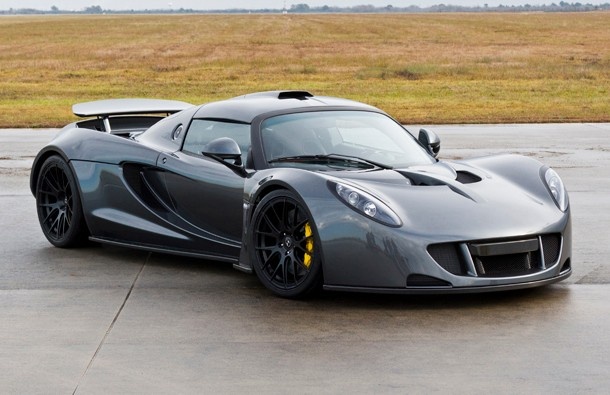
This, of course, is the Guinness record, during the confirmation of which you must be wearing a seat belt.
The shortest time for a production car, during which it was able to accelerate from 0 to 300 km / h (0-186 mph), was 13.63 seconds, and the car was responsible for the record Hennessey Venom GT, manufactured by the American concern Hennessey Performance.
The record was set by racer John Qiviks in Houston, Texas, USA, January 10, 2013. For the first lap, the Hennessey Venom GT accelerated from 0 to 300 km / h in 13.18 seconds with a tail wind of 6.5 km / h, but the second lap the car passed in 14.08 seconds with a wind of 9.7 km / h in headwind, and thus the average record time was 13.63 seconds.
The record-breaking model runs on a 7-liter V8 capable of developing an impressive 1244 hp.
The largest parking
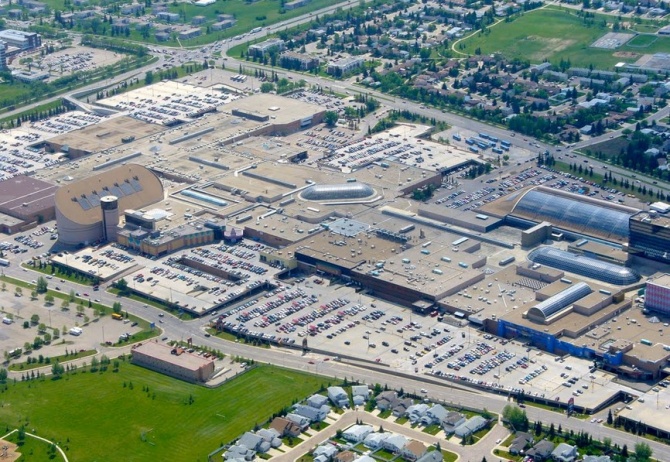
The world's largest parking space holds 20,000 cars and is located at the world's largest shopping and entertainment center, West Edmonton Mall, Edmonton, Alberta, Canada. However, parking has never been filled with more than 10,000 cars.
The fastest speed on Earth
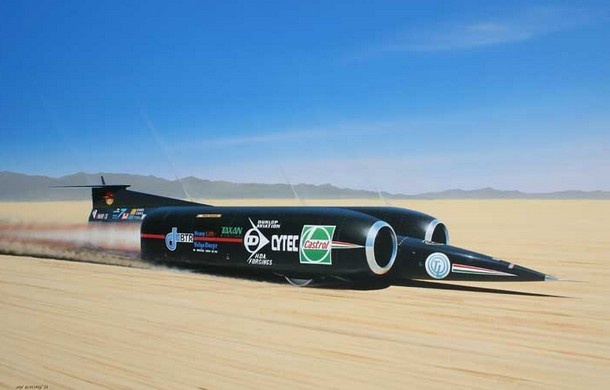
The official speed record on earth (measured at a distance of one mile) is 1 227.985 km / h (763 035 mph), and it was set by Andy Green (Great Britain) on October 15, 1997 in the Black Rock desert, Nevada, USA, by car called Thrust SSC.
Although the Thrust SSC is the first car to officially break the sound barrier, it is claimed that a Budweiser Rocket Car, driven by Stan Barrett (USA), reached 1,190,377 km / h (739,666 mph) at Edwards Air Force Base California, USA, December 17, 1979. However, the published speed was not officially recorded in the Book of Records, since the speed was measured by the US Air Force radar, and this digital device, as it later turned out, was not properly calibrated and certified.
The record car is powered by two Rolls-Royce Spey 202 jet engines that generate 222,000 Newton thrust.
The highest speed achieved by a diesel engine

The highest speed ever achieved by a diesel car is 563,418 km / h (350092 mph), and Andy Green (Great Britain) set this record while driving a JCB Dieselmax in Bonneville Salt Flats, Utah, USA, August 23 2006 year. At the same time, Green broke his own record, achieved the day before at a speed of 526,027 km / h.
The largest ensemble of car horn

One of the largest MINI on the Mack festivals attracted a huge number of music lovers, and the festival culminated in an ensemble of car signals to the Deep Purple song "Smoke On The Water" - then 400 cars were simultaneously signaled at the event in Grand Rapids in St. -Ignas, Michigan, USA, August 3, 2013. Thus, the event fell into the Guinness Book.
Lowest car

Great Britain. Built by Perry Watkins, the Flatmobile, just 66 centimeters high, sets the world record as the lowest car on the planet. Built from a jet engine, the Batmobile demanded nearly 18 months before it first set off.
16 girls fit in Smart

Ok, the time has come for Guinness's most ridiculous record. If you are a girl of very short stature not older than 18 years old, and you have the flexibility of an acrobat, then you can also try to beat one of the most ridiculous Guinness records ... Oh yes, you will need another Smart car. The record was set in New Zealand, where the dancers of the local group "Candy Lane" tried to set a record for the number of people crowded in Smart.
This may seem like an impossible task, but the video below proves that Smart ForTwo has more features than you might think in terms of spaciousness.
The longest jump in a car

Returning to 2010, we can see another spectacular record (in the video below), as a monster truck called Bad Habit set the record for the longest jump at 600 meters (2010 feet). Guinness Book Commission assured the record.
28 girls who fit in a Mini

Remember, we wrote above about the girls who fit into the Smart with sixteen? They also set another new record, placing themselves in even greater numbers now in Mini Cooper SD.
To break the previous record (which they themselves set, having fit in a car in the amount of 27 people, by the city earlier), the ladies distorted their bodies enough to put themselves in a fairly cramped car interior.
The fastest in the world ... toilet
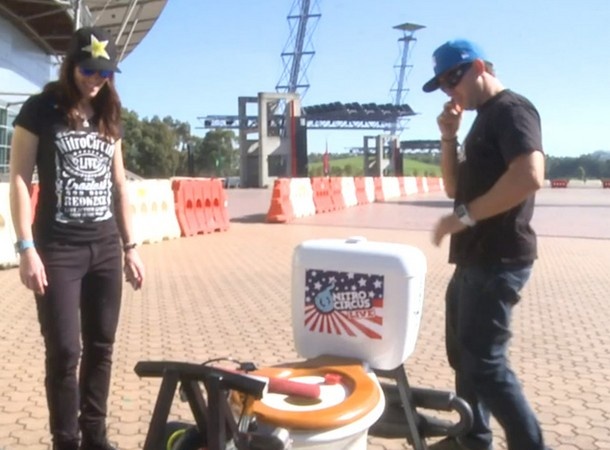
Obviously, there is no border in what the Book of Records recognizes as the official world record, and the fastest motorized toilet is also within their competence. No wonder the Book never stops growing.
Jolene Van Wugt was chosen as a toilet card pilot in Sydney's Olympic Park in Australia, breaking her own previous record of driving at a noticeable 4.3 miles per hour and accelerating to an impressive 75 km / h. And in the video below you can admire such a record.
Top Selling Sports Car
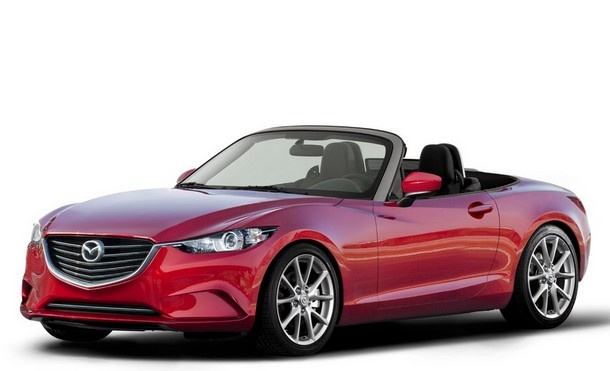
Forget about Ferrari and Jaguar - the title of the world's best-seller among sports cars has been assigned to the Mazda MX-5. The nine hundred thousandth car was produced in 2011.
The most expensive car
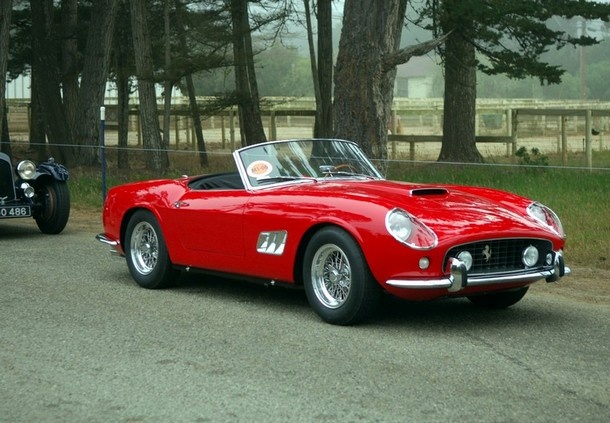
The Ferrari 250 GT took on the title of the world's most expensive car when DJ Chris Evans bought a 1963 model in 2010 at an astonishing price of £ 12 million. Such a high price was due to the rarity of the car: only 36 copies of this model were created by the legendary car factory.
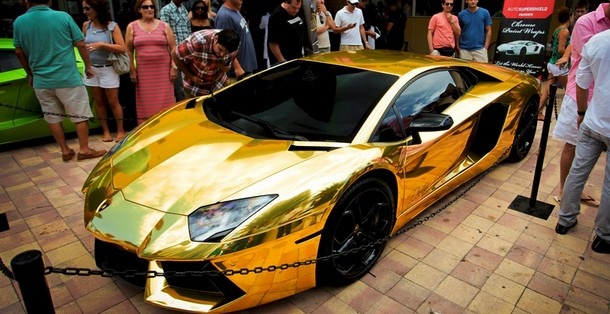
Meanwhile, the second most expensive model is not a rare model - the Lamborghini Aventador trimmed with gold (a total of 3 kg of gold was spent) is estimated at more than 5 million US dollars.
The first ICE car
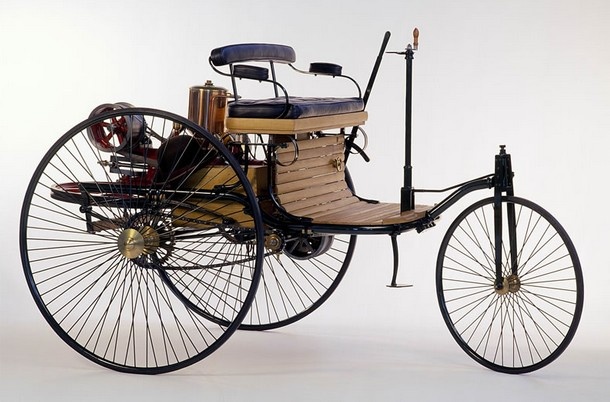
The very first car powered by an internal combustion engine, which was successfully set in motion, was called Motorwagen, and it was built in Germany back in 1885, could reach a speed of 16 km / h and was patented in 1886. It's a shame that the creator of the car, Karl Friedrich Benz, with all his desire, could not have entered this car in the Guinness Book of Records for one simple reason: he died in 1929, while the Guinness Book first began to be published only in 1955.
From helicopters and spaceships to elementary particles - before you 25 of the fastest things in the world.
25. The fastest train
The Japanese train JR-Maglev has reached speeds exceeding 581 kilometers per hour using magnetic levitation.
24. The fastest roller coaster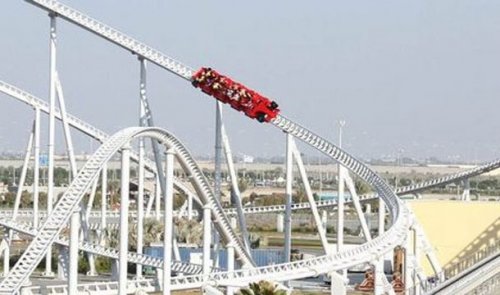
Formula Rossa, recently built in Dubai, allows adventurers to reach speeds of 240 kilometers per hour.
23. The fastest elevator
The elevators at the Taipei Tower in Taiwan transport people down and up at a speed of 60 kilometers per hour.
22. The fastest production car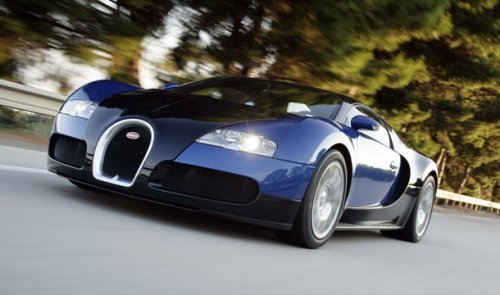
Bugatti Veyron EB 16.4 (Bugatti Veyron EB 16.4), accelerating to 430 kilometers per hour, is the fastest car in the world, approved for use on public roads.
21. The fastest non-serial car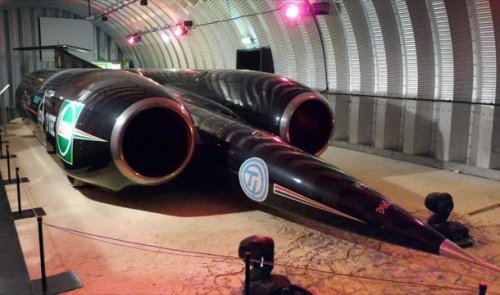
On October 15, 1997, the Thrust SSC rocket-propelled vehicle crossed the sound barrier in the Nevada desert.
20. The fastest manned aircraft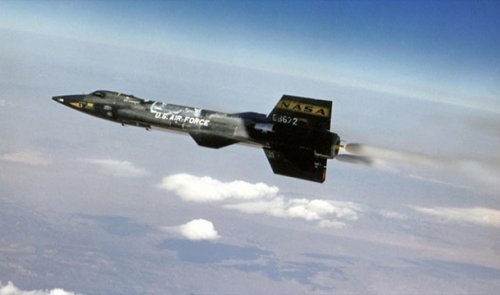
The US Air Force X-15 not only accelerates to an impressive speed (7,270 kilometers per hour), but rises so high that several of its pilots received astronaut “wings” from NASA.
19. The fastest tornado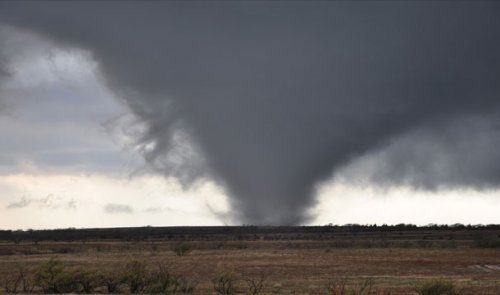
The tornado, which happened near the city of Oklahoma, was the fastest in terms of wind speed, reaching 480 kilometers per hour.
18. The fastest man
In 2009, Jamaican sprinter Usain Bolt set a world record at a distance of 100 meters, having run it in 9.58 seconds.
17. The fastest woman
In 1988, the American Florenc Griffith-Joyner ran the 100-meter in 10.49 seconds - a record that no one had beaten so far.
16. The fastest land animal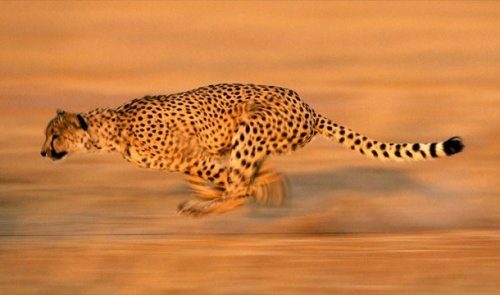
In addition to the fact that cheetahs run fast (120 kilometers per hour), they are also able to accelerate faster than most production cars (from 0 to 100 kilometers per hour in 3 seconds).
15. The fastest fish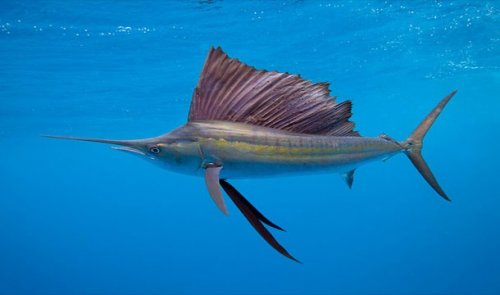
Some individuals of the sailboat species can accelerate to 112 kilometers per hour.
14. The fastest bird
Peregrine Falcon is also the fastest animal in the world as a whole and can exceed a speed of 325 kilometers per hour.
13. The fastest computer
Although, most likely, this record will already be broken by the time you read the article, the Milky Way-2 in China is the fastest computer in the world.
12. The fastest submarine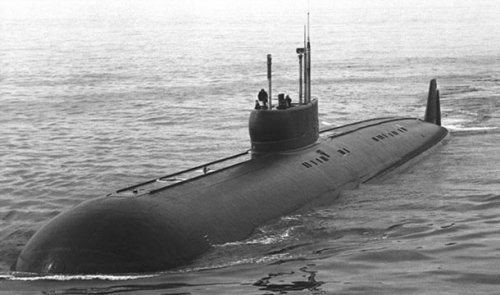
Records in such things are difficult to record, as information about submarines is usually kept secret. However, according to some estimates, the Soviet submarine K-162 developed the highest speed in 1969. The speed was about 44 knots.
11. The fastest helicopter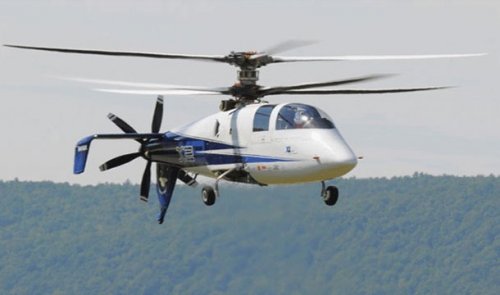
In July 2010, the Sikorsky X2 (Sikorsky X2) set a new speed record over West Palm Beach (West Palm Beach) - 415 kilometers per hour.
10. The fastest boat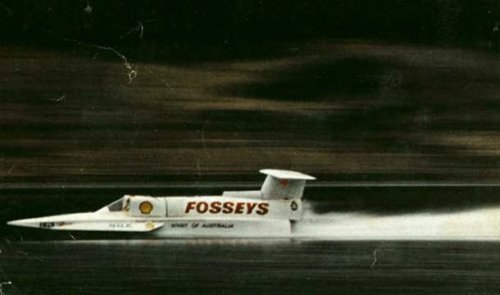
The world water speed record is the officially recognized maximum speed developed by water transport. At the moment, the record holder is the Spirit of Australia (Spirit of Australia), reaching 511 kilometers per hour.
9. The fastest racquet sport
In badminton, the shuttlecock can reach speeds of more than 320 kilometers per hour.
8. The fastest ground transportation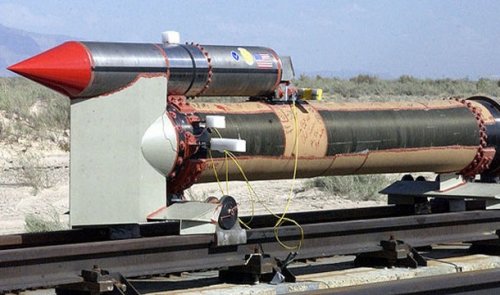
Military missile rails have speeds exceeding Mach 8 (9,800 kilometers per hour).
7. The fastest spaceship
In space, speed can only be measured relative to other objects. Given this, the fastest spacecraft moving from the Sun at a speed of 62,000 kilometers per hour is Voyager 1.
6. The fastest eater
Joey “Jaws” Chestnut is currently recognized as the International Federation of Competitive Eating World Champion after eating 66 hot dogs in 12 minutes.
5. The fastest crash test
To determine the safety rating, EuroNCAP usually conducts its crash tests at a speed of 60 kilometers per hour. However, in 2011, they decided to increase speed to 190 kilometers per hour. Just for fun.
4. The fastest guitar player
John Taylor set a new world record by playing Perfectly Bumblebee Flight at 600 beats per minute.
3. The fastest rapper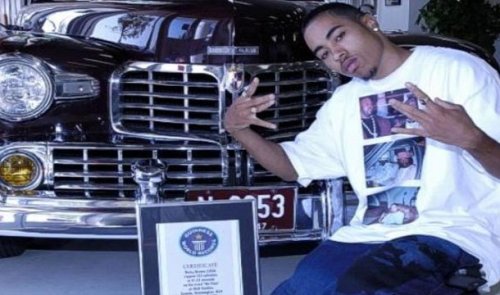
No Clue received the title “fastest rapper” in the Guinness Book of Records when he pronounced 723 syllables in 51.27 seconds. In a second, he uttered about 14 syllables.
2. The highest speed
Technically, the highest speed in the universe is the speed of light. However, there are a few reservations that lead us to the first point ...
1. The fastest elementary particle
Despite the fact that this is a controversial statement, scientists from the European Center for Nuclear Research recently conducted experiments in which mu-mesons of neutrinos covered the distance between Geneva, Switzerland and Gran Sasso, Italy several nanoseconds faster than light. However, at the moment, the photon is still considered the king of speed.
The first officially registered absolute speed record - 63.149 km / h - was established on December 18, 1898 by Count Gaston de Chaslu-Loba on an electric car designed by Charles Gento at a distance of 1 km.
On April 29, 1899, the Belgian Camille Zhenatzi, the first to cross the 100-kilometer line, was on the electric car “La Jamais Contente” (French. Always dissatisfied) with an engine power of 40 hp. It developed a speed of 105.876 km / h.
The 200-kilometer speed limit was reached in 1911 by racer R. Boorman. In 1911, he showed 228.04 km / h in a Benz car.
The 300-kilometer speed was first achieved by H.O. D. Sigrev in 1927. On the Sunbim car he showed 327.89 km / h.
The 400-km speed limit was first “crossed” by Malcolm Campbell in a Nepir-Campbell car in 1932 (408.63 km / h).
The 500-kilometer speed limit was overcome in 1937 by John Ayston in a Rolls-Royce-Ayston car (502.43 km / h).
The 1000-kilometer speed limit was first overcome on October 23, 1970 by the American Harry Gabelich on a Blue Flame rocket car on the dried salt lake Bonneville, showing an average speed of 1014.3 km / h. The Blue Flame had a length of 11.3 m and a weight of 2250 kg.
The highest speed in the world - 1229.78 km / h on a land vehicle - jet car (Thrust SSC) was shown by the Englishman Andy Green on October 15, 1997.
The average speed for two runs was 1226.522 km / h. A 21-kilometer long track was marked on the bottom of a dried lake in Nevada (USA). Green’s crew was powered by two Rolls-Royce-Spey turbojet engines with a total capacity of 110 thousand horsepower.
The highest speed a woman has developed in a car is 843.323 km / h. It was shown in December 1976 by an American Kitty Humbleton in a three-wheeled car S.M. Motivator, with a capacity of 48 thousand. l.c. in desert Alvard, Oregon, USA. According to the sum of two races in two directions, her official record is 825.126 km / h.
The highest speed for steam cars was achieved in August 2009 by a car developed by a group of British engineers. The average maximum speed of the new car in two races was 139.843 miles per hour, or 223.748 kilometers per hour.
In the first race, the car developed a speed of 136.103 miles per hour (217.7 kilometers per hour), and in the second - 151.085 miles per hour (241.7 kilometers per hour). The steam car is equipped with 12 boilers in which water is heated by the combustion of natural gas. From boilers, steam under pressure, at a speed twice the speed of sound, is fed into the turbine. About 40 liters of water evaporate in boilers per minute. The total power of the power plant is 360 horsepower.
The fastest production passenger car is the Bugatti Veyron Super Sport. On July 4, 2010, on the Volkswagen test track, pilot Pierre Henri Rafanel in the first race in one direction was able to reach a speed of 427.933 km / h, and in the second race already in the opposite direction, the car accelerated to 434.211 km / h. The result was stunned even by the creators of the machine, who were counting on an approximate maximum speed of 425 km / h.

Germany and representatives of the Guinness Book of Records, who recorded a new record for maximum speed of 431,072 km / h (268 miles), which is the average between two attempts. According to official data, the manufacturer picks up speed of 100 km / h in 2.5 seconds, 200 km / h - 6.7 seconds, 300 km / h - 14.6 seconds, 400 km / h in 55.6 seconds.
The car is equipped with a W-shaped 16-cylinder 64-valve engine with four turbochargers with a working volume of 7993 cm³. Maximum possible power 1200 hp at 6000 rpm
The fastest diesel-powered car is the Mercedes-Benz C111-III with a 3-liter engine and 230 hp. During tests on the Nardo highway in southern Italy on October 5-15, 1978, he developed a speed of 327.3 km / h.
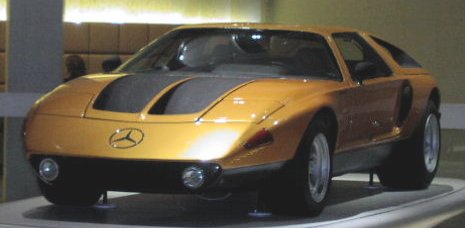
The fastest production diesel passenger car - the BMW 325tds has a speed of 214 km / h. It is equipped with a 2.5-liter turbocharged 6-cylinder diesel engine. Engine power - 143 hp Average fuel consumption of 6.5 liters per 100 km.
Speed \u200b\u200brecord on a car with a drive on wheels: 737.395 km / h. Modern record crews are equipped with turbojet or rocket engines; in this category, the engine must always spin the wheels. The record was set on October 18, 2001 by Don Vesco on a Turbinator car, on Lake Bonneville.
The first car to be able to accelerate to a speed of 1,000 mph (1,609 km / h) should be the Bloodhound SSC. The car will be equipped with three engines: a hybrid rocket engine, a Eurojet EJ200 jet engine mounted on an Eurofighter Typhoon fighter, and an 800-horsepower 12-cylinder V-shaped gasoline engine that pumps fuel and provides electric and hydraulic power to the aircraft and rocket.
On July 19, 2010, at the Farnborough International Airshow Exhibition in London, which opened on the outskirts of London, a full-size Bloodhound SSC layout was presented. If everything goes as planned, Bloodhound SSC will set a new world record for speed on earth (for manned crews) in 2011.
It is believed that the first speed record belongs to the French racer and designer Emile Levassor, who set it during the Paris-Bordeaux race. The whole world remembers his phrase, which served as the beginning of the desire for high speeds: “We gave out thirty kilometers per hour! It was a real madness! ” But in 1895 there were no official rules for determining record levels, so formally the French engineer was left without the status of a pioneer.
And he went to Count Gaston de Chaslau-Loba, who took care of registering his achievement. The car, developed by designer Charles Gento, at a distance of 1 kilometer accelerated to 63 km / h. The title of record holder was decided to take for himself his eternal rival - professional race car driver Camille Zhenatzi, accelerating in just a few days to 66 km / h. That is how the long-standing confrontation began, during which the machines continued to improve and receive more and more improved power units, as well as aerodynamic bodies. In 1899, Count de Chaslau-Loba finally managed to significantly outrun the enemy, reaching 92.7 km / h - then such a speed was considered simply unattainable.
But just two months later Camille Zhenatzi set the first milestone speed record by car - he overcame the milestone of 100 km / h, exceeding it by 5 kilometers. He owed much of his incredible success to a new vehicle - a car with the name "Forever Dissatisfied", which was equipped with electric motors and had a streamlined body made of alloyed aluminum alloy.
Surprisingly, the next milestone for the first time was overcome by steam transport, which has not yet been completely debited from the account - in 1906, racer Fred Marriott in a Stanley car accelerated to 205 km / h. Internal combustion engines, then still very imperfect, could not reach such a record. But in 1909, a Blitzen Benz car driven by Victor Emery on the Brookland track in the UK showed a result of 202 km / h. Two years later, Robert Boorman set the next world speed record using an ICE car - it reached a value of 228 km / h.
The next world speed record was set by Henry Sigrev, who used the Sunbeam "The Slug" 1000 hp car, equipped with two aircraft engines with a total capacity of 900 horsepower. On the Daytona Beach highway in 1927, it accelerated to 327 km / h, which allowed it to simultaneously exceed the milestone of miles - 200 per hour. Interestingly, unlike the pre-existing prototypes, this car was not at all light - its total starting weight exceeded 4 tons!
Another famous driver, Malcolm Campbell, who had tried several times unsuccessfully to set the world speed record in a Blue Bird car equipped with a Napier motor, could not put up with Sigrev's championship. In 1931, Campbell brought to Daytona Beach a new generation of his famous car, which had the name Campbell-Napier-Railton. During two races, he showed a speed of 396 km / h, only a little short of the next threshold. However, a year later, he returned with a slightly modified machine, and reached a speed of 404 km / h, having officially entered his name in history and received the title of knight.
Soon, however, internal combustion engines had to make room, giving way to more powerful jet turbines. But until this happened, the American John Aston took advantage of the maximum available engine power at that time by installing two Rolls-Royce aircraft engines with a capacity of 5,000 horsepower on his car. In 1937, his record car reached a speed of 502 km / h, driving several times along the bottom of the dry Lake Bonneville. In 1939, this record was raised to 575 km / h, but Eiston refused further competition, and soon he was ahead of the driver John Cobb, who showed the result first at 595, and then at 640 km / h.
After World War II, most riders switched to jet engines, which seemed to them more promising. And indeed, on the same dry Lake Bonneville, the American Harry Gabelich in 1970 accelerated to a speed of 1014 km / h. Such a car, called the Blue Flame, was equipped with one jet turbine, the thrust of which reached approximately 22 thousand horsepower. In 1979, it was stated that stuntman Stanley Barrett overcame the speed of sound, but the driver did not want to make the second race according to the rules for setting records, and army experts involved in the measurements did not record its achievement.
To date, the maximum speed record for the car belongs to the supersonic vehicle Thrust SSC, which showed a result of 1228 km / h. Corresponding confirmation was made in 1997, when the car entered the track in the Black Rock desert of the United States. The car was equipped with two Rolls-Royce Spey turbofan engines operating in afterburner mode - their total power reached 110 thousand horsepower. Especially for driving such an incredible vehicle, the Royal Air Force pilot Andy Green, who holds the title of the fastest driver, was invited.
Speed \u200b\u200brecords on a carJCB Dieselmax - fastest diesel car on display at Heritage Motor Center
This term has other meanings, see Speed \u200b\u200bRecords.
The first speed record for a car with an internal combustion engine belongs to Emil Levassor, put in the Paris-Bordeaux-Paris race in 1895.
The first officially registered absolute speed record - 63.149 km / h - was established on December 18, 1898 by Count Gaston de Chaslu-Loba on an electric car designed by Charles Gento at a distance of 1 km.
On April 29, 1899, the Belgian Camille Zhenatzi, who was on the electric car “La Jamais Contente” (FR. Always Displeased) with an engine power of 40 hp, was the first to cross the 100-kilometer line. It developed a speed of 105.876 km / h.
The 200-kilometer speed limit was reached in 1911 by racer R. Boorman. On a Benz car, he showed 228.04 km / h.
The 300-kilometer speed was first achieved by H.O. D. Sigrev in 1927. On the Sunbim car he showed 327.89 km / h.
The 400-km speed limit was first “crossed” by Malcolm Campbell in a Nepir-Campbell car in 1932 (408.63 km / h).
The 500-kilometer speed limit was overcome in 1937 by John Ayston in a Rolls-Royce-Ayston car (502.43 km / h).
The 1000-kilometer speed limit was first overcome on October 23, 1970 by an American Harry Gabelich on a Blue Flame rocket car on the dried salt lake Bonneville, showing an average speed of 1014.3 km / h. The Blue Flame had a length of 11.3 m and a weight of 2250 kg.
For the first time, 36-year-old professional American stuntman Stan Barrett overcame the speed of sound on a car with a three-wheeled Budweiser Rockit jet engine. 2 engines were installed on the car. The main engine is a liquid propellant rocket engine with a thrust of 9900 kgf. The second engine, a solid propellant solid propellant engine with a thrust of 2000 kgf, was installed in case the thrust of the main engine would not be enough to overcome the speed of sound. The race took place at the Edwards Air Force Base (California, USA) in December 1979. But this record was not officially registered by the FIA, because according to the rules of this organization, to register a record, it is necessary to make two arrivals in opposite directions to exclude the influence of wind and the slope of the track. The record speed is the arithmetic average of the speed in these two races. However, Stan Barrett refused the second race, believing that the record was set. However, since the radar used to measure the speed turned out to be out of sync and aimed at the car manually, the achievement of supersonic record speed in that race by many historians of record automobile rides is generally questioned, in particular, it is not in the official report of the US armed forces written by officers driving the radar during check-in.Thrust 2 SSC
The highest speed in the world - 1229.78 km / h on a land driven vehicle - a jet car (Thrust SSC) was shown by the Englishman Andy Green on October 15, 1997. The average speed for two runs was 1226.522 km / h. A 21-kilometer track was marked on the bottom of the dried up Black Rock Lake in Nevada (USA). Green’s crew was powered by two Rolls-Royce-Spey turbojet engines with a total capacity of 110 thousand horsepower.
The highest speed a woman has developed in a carequal to 843.323 km / h It was reached in December 1976 by an American Kitty Humbleton (known by her maiden name as Kitty O’Neill) on a three-wheeled SMI Motivator with a capacity of 48 thousand. l c. in the desert of Alvard, Oregon, USA. In the average of two races in two directions, her official record is 825.126 km / h.
The highest speed for cars with a steam engine was achieved in August 2009 by a car developed by a group of British engineers. The average maximum speed of the new car in two races was 139.843 miles per hour, or 223.748 km / h. In the first race, the car developed a speed of 136.103 miles per hour (217.7 km / h), and in the second - 151.085 miles per hour (241.7 km / h). The steam car was equipped with 12 boilers in which the water was heated by burning natural gas. From boilers, steam under pressure, flowing out of a Laval nozzle, at a speed twice the speed of sound, was supplied to a steam turbine. About 40 kg of water evaporated in boilers every minute. The total power of the power plant was about 360 horsepower.
The fastest production passenger car is the Bugatti Veyron Super Sport. SSC Tuatara - Maximum vehicle speed of 443 km / h (theoretical)
The fastest road passenger car is the Ford Badd GT. The speed achieved by him is 455 km / h.
The fastest diesel car - "JCB Dieselmax." On August 23, 2006, on the surface of the dried Lake Bonneville, the prototype, under the direction of Andy Green, set a new world speed record for diesel cars - 563,418 km / h. The previous record was set in 1973 and amounted to 379.4 km / h.
The fastest serial diesel passenger car - The BMW 330 TDS has a speed of 320 km / h. It is equipped with a 6-cylinder, 3-liter turbocharged diesel engine. Engine power - 300 l. from. Average fuel consumption - 8 liters per 100 km.
The fastest sedan is the 1992 Audi S4, which, under the control of the American Jeff Guerner, developed a speed of 260 mph (about 418 kilometers per hour) during the races on the dry salt lake Bonneville in Utah, USA. This all-wheel drive car was equipped with a five-cylinder turbocharged engine boosted to 1,100 horsepower.
Speed \u200b\u200brecord on a car with a drive on wheels: 737.395 km / h In modern record-breaking cars, turbojet or rocket engines; in the class of record cars with wheel drive, the engine must always turn the wheels, the use of jet propulsion is unacceptable. The record was set on October 18, 2001 by Don Vesco on a Turbinator car, on Lake Bonneville.
The milestone of 1,000 mph (1,609 km / h) has not yet been overcome by a single vehicle. Bloodhound SSC designers have plans to set a new record. The car will be equipped with three engines: a hybrid rocket engine, a Eurojet EJ200 jet engine, used on an Eurofighter Typhoon fighter plane, and a 12-liter 800-liter V-shaped gasoline engine. pp. used to drive pumps that pump fuel to a rocket engine and drives an onboard electric generator.


